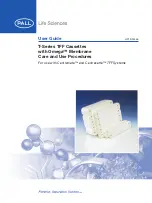
In the case of 2, 3 or 4 wire sensors the indicator panel will
identify which wire you are connected to (refer to
Fig 1
). Reading
from the top of the panel, if the first LED lights up this indicates
the clip is connected to the heater supply voltage. If the second
LED lights up this is an indication of connection to the ECU 5V
supply, (applicable in the case of Titania sensor, where fitted).
The open circuit LED lights up when the tester is first switched on
but not connected to any of the sensor wires, this is an open
circuit indicator. This LED will stay lit if a bad connection is made
to any of the sensor wires, it will go out if a good connection is
made, one of the other lights will then be lit. When connection to
the signal wire is made the lights on the vertical display will go
out, then the display LED array In the Lambda window will
activate.
A good sensor will show movement across the light path and will
illuminate the LEDs in or across the "Lambda Window" (see
diagram over) Once the LED array is activated, ignore any
occasional flickering of the indicator lights on the panel to the left.
If connected in default (ZIRCONIA) mode, but only the top 2 lights
on the right hand side are flickering, this could indicate a Titania
sensor. Leaving the unit connected to the signal wire, switch the
unit off and follow instructions for selecting Titania sensor. If the
lights then show movement across the Lambda window (display
LED), this would then indicate a Titania sensor on the vehicle.
Fig 1
Indicator Panel:
NOTE:
Cross count is disabled - it only indicates connection to Titania
sensors by displaying ''t'' in the cross count box.
One of the unique features of the Lambda Tester is its ability to indicate
to which wire on the Lambda sensor the unit is connected. This tells the
operator which is the signal wire for measuring the Lambda output and
also identifies the presence of the heater supply voltage (where
applicable) and the sensor ground condition.
Refer to Fig 1.
Introduction
The Lambda Tester is designed to measure the crossover changes
which occur in the closed loop control system. The product will
analyse both Zirconia and Titania type sensors.
This analyser can simulate the sensor signals to the ECU to verify
acceptance of the signals and confirm that the ECU acts upon
them.
The unit allows the operator to verify which wire the instrument is
connected to, a feature which is particularly useful when working
with heated sensors.
Features
p
p
Tests 1, 2, 3 and 4 wire sensors.
p
p
Tests heated and non-heated sensors.
p
p
Unique ident panel identifies which wire the instrument is
connected to i.e. ground, heater or ECU supply (where
applicable). Open circuit indicator identifies bad connection.
p
p
Rich or lean simulation to check ECU reaction.
p
p
Wire piercing clip for ease of connection.
p
p
Unique LED light path displays the crossover signals of the
Lambda sensor.
p
p
Runs off internal 9V alkaline battery with indicator to show
when battery is running low.
p
p
One year limited warranty.
p
p
Sealed control switches for workshop environment.
p
p
Durable ABS enclosure.
Warnings
Failure to follow the warnings indicated here may result in personal
injury and/or damage to property and the instrument. Misuse or
improper application of the instrument will invalidate the warranty.
The instrument is designed for analysing Lambda/O
2
sensor
systems and simulation of the Lambda signal output to the ECU. It
is not intended for use on any other vehicle systems. Always wear
the correct eye protection and keep hands and clothing from
coming into contact with rotating engine parts.
Lambda/O
2
sensors are located within the exhaust system, when
working on them be well aware of extremes of heat.
Ensure the handbrake is applied on the vehicle under test and if
the vehicle has automatic transmission, put it in the
PARK
position.
Always ensure there is adequate ventilation when working with
engine running. Emissions of carbon monoxide (if inhaled) can
cause serious damage to health.
VS925 - 1 - 200905
Operating Instructions:
NOTE: DEFAULT SETTING IS ZIRCONIA. TITANIA SENSOR MUST
BE MANUALLY SELECTED (see below) & THE RICH & LEAN
VALUES ARE REVERSED.
SELECTING TITANIA:
Before switching on, press V or 0V
button, keep pressed down whilst switching unit ON, then release.
Refer to Fig 2.
This puts the unit into Titania mode, confirmed by ''t''
appearing in the cross count box at the top left of the unit in
Fig 3.
NOTE: The engine must be at normal operating temperature and
running at 1500-2000RPM to test the O
2
sensor.
The tester is fitted with a wire-piercing clip allowing it to pierce the
sensor wires without damage, (the insulation congeals back to its
original state after removal).
Switch on the tester by pressing the ON button at
Fig 2.
Connect the
black ground clip to a good chassis ground, or the negative terminal of
the vehicles battery. Connect the wire-piercing clip to any of the sensor
wires: the tester is capable of testing 1, 2, 3, and 4 wire sensors.
Fig 2




















